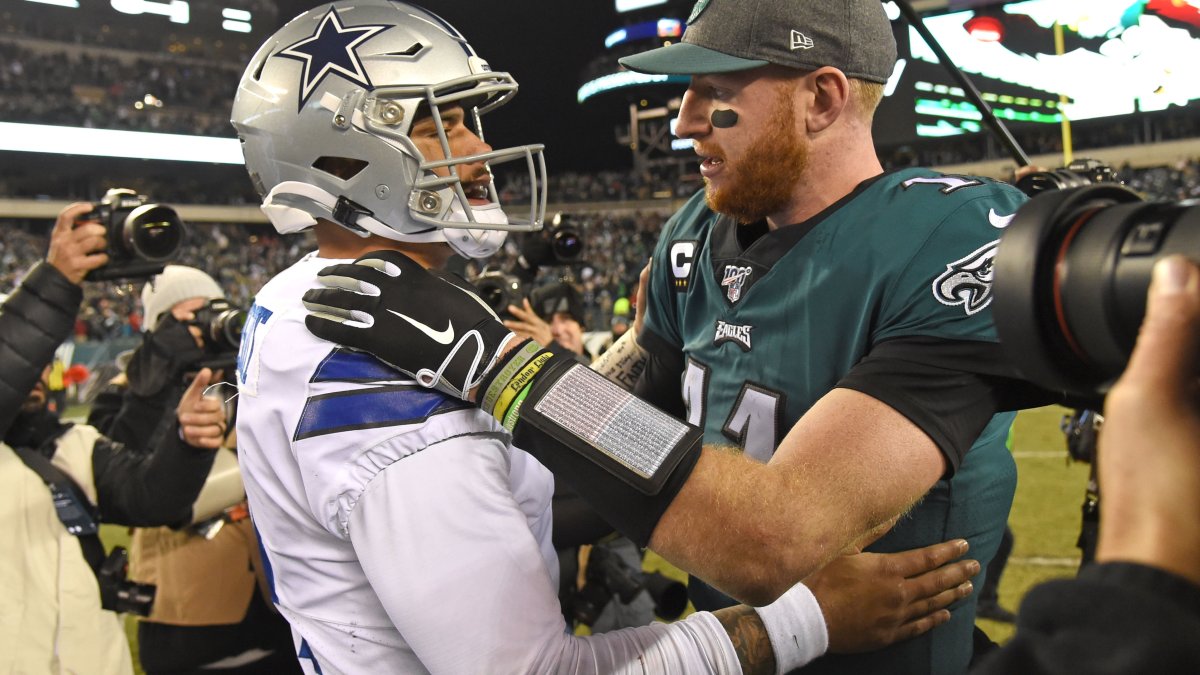The 2016 quarterback class was once the crown jewel of the quarterback youth movement in the NFL. The Dallas Cowboys hit big-time in the fourth round on Dak Prescott, who was named Offensive Rookie of the Year after one of the most efficient first seasons in recent history. The two quarterbacks taken at the top of the draft — the Los Angeles Rams’ Jared Goff and Philadelphia Eagles’ Carson Wentz — started slowly, but quickly rose to the top of the NFL. Wentz was a leading MVP candidate in 2017 before suffering a season-ending ACL tear in Week 14, and Goff led the Rams to 11-5 and 13-3 records in his second in third seasons, culminating in a disappointing Super Bowl loss to end the 2018 season.
While Wentz and Goff are locked into new long-term contracts and Prescott should soon follow, expectations for each have tempered from their respective highs. Most fans of their teams recognize their importance to the future, but not many are fully satisfied. After a 2019 season that saw Prescott improve in grade and efficiency for a couple down campaigns, Wentz’s Eagles underperform lofty expectations, and Goff’s Rams go from Super Bowl to out of the playoffs, it’s a good time to reassess where each stands in comparison to each other and the broader quarterback landscape.
Bayesian updating
In this analysis I’m going to go through the passing grades and dropback efficiency for the 2016 class to this point and forecast them going forward. We’ll form forecasts for their true passing ability in terms of grades and expected points added, by properly weighing results and priors, or pre-NFL expectations, based on their respective draft positions. The technique used is called Bayesian updating. I laid out a more detailed explanation about the methodology behind this analysis in a prior article when I applied it to the 2017 quarterback class.
Exclusive content for premium subscribers

WANT TO KEEP READING?
Dominate Fantasy Football & Betting with AI-Powered Data & Tools Trusted By All 32 Teams
Subscribe nowAlready have a subscription? Log in
Exclusive content for premium subscribers

WANT TO KEEP READING?
Dominate Fantasy Football & Betting with AI-Powered Data & Tools Trusted By All 32 Teams
Already have a subscription? Log in



 © 2025 PFF - all rights reserved.
© 2025 PFF - all rights reserved.